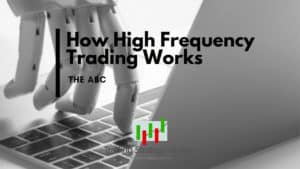Building Generational Wealth-a Special Interview from A.B. Ridgeway

A. B. Ridgeway, today’s interviewer, is a visionary financial advisor, dedicated to teaching generational wealth by guiding individuals and families towards a secure and prosperous financial future while integrating faith and values…the focus of his Financial Advisors Say The Darndest Things Podcast and the theme of today’s episode.
Subscribe to How To Trade It
With a passion for teaching and helping others become good stewards of their resources, A. B. embodies the principles of wise financial management and compassionate service.
As a result of a strong academic foundation in finance and economics, A. B. Ridgeway’s journey into the financial industry began with a desire to make a lasting impact on people’s lives. Holding a degree in Finance and Economics from a prestigious institution, A. B. has cultivated a deep understanding of the intricate world of finance.
Generational Wealth-more than just money!
A. B.’s philosophy centers around the belief that financial advice should not only be about wealth accumulation, but also about stewardship, purpose, and legacy. Inspired by biblical principles of stewardship, A. B. aims to empower clients to make informed decisions aligned with their values, ensuring financial security for themselves and “generational wealth” for future generations.
In this episode, A.B. and Casey discuss…
- Reflections on Personal Growth
- Casey shares his personal journey through challenges and success
- Highlights the importance of maintaining a positive mindset and finding motivation during tough times
- Understanding Different Types of Investors
- Discuss different investor personalities, from risk-takers to conservative investors
- Emphasizes the value of aligning trading strategies with one’s personality and risk tolerance
- Strategies for Windfall or Unexpected Wealth
- Talks about the “secret succeeders” who come into wealth through windfalls or unexpected success
- Introduces the covered call strategy as a conservative options approach for managing wealth
- Discusses the implications of short selling and the GameStop incident
- Passing Down Wealth and Values
- Explores the challenge of preparing the next generation for managing generational wealth
- Emphasizes the importance of building a strong relationship with children to guide their financial growth
- Talks about the importance of teaching financial education and values to children
Subscribe to How To Trade It
Covered Call Strategy
The covered call strategy is an options trading strategy where an investor who owns a stock (or another underlying asset) simultaneously sells a call option on that stock. This strategy is often used by investors who are looking to generate income from their existing stock positions.
Here’s how the covered call strategy works:
- Own the Underlying Stock: The investor already owns a certain number of shares of a particular stock. This stock is referred to as the “underlying” stock.
- Sell a Call Option: The investor sells (also known as “writes”) a call option on the same stock they own. A call option gives the buyer the right, but not the obligation, to buy the underlying stock from the seller (the investor who wrote the call) at a specific price (the “strike price”) within a certain timeframe (until the option’s expiration date).
- Receive Premium: In exchange for selling the call option, the investor receives a premium (a cash payment) from the buyer of the option. This premium is the investor’s immediate profit.
- Limited Profit Potential: The maximum profit potential from the covered call strategy is the premium received from selling the call option. If the stock price remains below the strike price of the call option until its expiration, the call option will likely expire worthless, and the investor keeps the premium as profit.
- Limited Upside: However, if the stock price rises significantly above the strike price of the call option, the investor’s potential gains from owning the stock will be limited by the obligation to sell the stock to the call option buyer at the strike price.
- Breakeven Point: The breakeven point for the covered call strategy is the original purchase price of the underlying stock minus the premium received from selling the call option.
The covered call strategy is often used by investors who have a neutral to slightly bullish outlook on the underlying stock. It allows them to earn income from the premium while potentially benefiting from moderate stock price increases. However, it does cap the potential gains if the stock experiences substantial price appreciation.
It’s important for investors to carefully consider their goals, risk tolerance, and market expectations before employing the covered call strategy, as well as to have a solid understanding of options trading and their associated risks.
Subscribe to How To Trade It
Connect with A.B. Ridgeway:
- Website: https://www.abrwealthmanagement.com/christianfinanceresources
- LinkedIn: https://www.linkedin.com/company/abrwm/
- Email: info@abrwealthmanagement.com
- YouTube: https://www.youtube.com/channel/UC-3oefloPVx_tj4BMUSMaVQ
- Podcast: F.A.S.T.D.T.
Connect with Casey:
- Website: https://caseystubbs.com
- YouTube: https://www.youtube.com/TradingStrategyGuides
- YouTube: https://www.youtube.com/caseystubbs
- Facebook: https://www.facebook.com/TradingStrategy
- LinkedIn: https://www.linkedin.com/in/caseystubbs
- Twitter: https://twitter.com/caseystubbs316
- TradingStrategyGuides.com: https://www.tradingstrategyguides.com/
- Global Prop Trader: https://globalproptrader.com/
- Email: podcast@tradingstrategyguides.com
Disclaimer: Trading carries a high level of risk, and may not be suitable for all investors. Before deciding to invest you should carefully consider your investment objectives, level of experience, and risk appetite. The possibility exists that you could sustain a loss of some or all of your initial investment. Therefore, you should not invest money that you cannot afford to lose. You should be aware of all the risks associated with foreign exchange trading, and seek advice from an independent financial advisor if you have any doubts.







